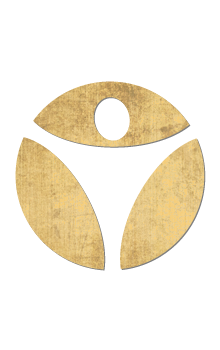History Of Yoga
- Updated on: December 15, 2021
Tracing the history of yoga is like tracing the history of the olympic games. Do you just go into the history of the modern games, or do you dive into the ancient olympic games first? And if so, do you chat about all of the mythology that comes with the original? That’s the thing about yoga.
There’s a big difference between the modern yoga we practice today, and the stuff they were doing a few thousand years ago. In fact, they’re practically unrecognizable.
While yoga goes back 5,000 years, it has been evolving ever since and the modern yoga we practice in the West is COMPLETELY different from the type of yoga that was practiced 5,000 years ago.
In fact, many of the yoga exercises that represent yoga the most, (like the downward dog, sun salutations, and the warrior poses) have not been found in any of the old texts.
So just like there’s a difference between the modern olympic games and the ancient ones, there is also a big difference between modern yoga and ancient yoga. Hats off to David Gordon White of Santa Barbara University, whose research forms the basis for this article.
Yoga when it wasn’t really yoga
Although we know that Yoga goes pretty far back through mentions of it in the Rigveda, which was written in 3,000 BCE and is one of the oldest pieces of written text in the world, we don’t actually know anything more about the practice of Yoga or even IF it was practiced back then at all.
In all likely hood, the word yoga referred to a chariot one would use during war. A war chariot! Less than peaceful connotations – but the world was different back then and the subcontinent was run by Hindu warlords.
Side note and a little etymology for you yoga nerds. The direct translation of the word yoga is actually “yoke.” No, not yolk, the gooey egg stuff. Yoke! Ever been told to yoke a bull or a horse? Maybe not if you grew up in New York City. Yoke is a contraption that you put around an animal so it can pull stuff. In the Rigveda, the word yoke referred to the rigging between a horse and its chariot, and later, referred to the entire chariot rig itself. Eventually, the meaning of yoga would evolve from yoke to join to unite to union.
How did yoga go from spiky wheels of doom to beach retreats? It all started when people started philosophizing about life two thousand years later.
At least that is what we know right now. Because since that first known mention of the word yoga in the Rigveda, we don’t know anything else about it until it appears again in another Hindu scripture a few thousand years later, roughly in 300 BCE.
The yoga community, which draws on age-old teachings and practices often likes to say that yoga is thousands of years old. By linking their practices back to 3000 BCE, they’re able to extol the benefits of yoga in order to write a book, or fill a class. At Body By Yoga, we did our research, and although it’s not as old as most people in the community think it is, we’re still certain it’s pretty darn good for you!
The practice of yoga didn’t develop until much, much later and we have almost nothing in common with the yoga before the 12th century. So Yoga is old. It’s just more like hundreds of years old rather than thousands. In the context of the world, you might even say it was developed kind of recently.
Truth is, you would be amazed by how much mysticism and hearsay there still is when it comes to yoga. At Body By Yoga, we are dispelling with the myths, we’re doing our research, and we are bringing a scientific, anatomy focused approach to yoga.
Philosophizing
Around 300 BCE, people started to wonder about things. And kind of like the ancient Greeks, who identified the body, mind, and intellect as three components of man, ancient philosophers in India came to understand the world in three ways as well. The warrior, the chariot, and the chariot driver’s instincts were the three components of an individual.
This was bridge time in yoga’s long history and although the practice of yoga was still thousands of years away from being formed, the meaning and foundation of yoga started to take place around this time, when the meaning of the word yoga started to evolve from warrior chariot to something more like a system or a union.
One had to get control over all three elements in order to get a union between the three, and a system was born. Yoga became the union between the rider, the chariot, and the charioteer – the union between body, mind, and intellect.
In 300 BCE, the practice of yoga was still roughly another thousand years away from being formed, but the meaning, the foundation, and the “system” for identifying the self and one’s place in the world, started to take place then.
Religious Roots
Yoga was all about searching for the meaning of life. So it’s no wonder that it ebbed and flowed with influences from major religions in the area such as Buddhism, Hinduism, and Jainism. Many tenets from those religions, such as prescriptions for better living, would make it into the evolution of yoga, which really heated up between 300 CE and 1000 CE, a full two to three thousand years after the first mention of the word yoga.
Though there would be MANY strands of yoga that would form as a result of the different religions and cultural influences in the area, including karma yoga (with an emphasis on doing good through action), devotion yoga (with an emphasis on love and devotion), and meditative yoga, there would be some major similarities that would unite all of them under the yoga umbrella.
Yoga back then was about achieving salvation through enlightenment; breaking the chains if you will, and seeing things for what they truly are – which at the time basically referred to the idea of a greater good, aka god.
Whether you did that through meditation, action, or devotion would depend on your yoga school and region.
However, there was one critical difference that would create a yoga “rift” – which would lead to the hybrid type of yoga that we have today.
In the red corner were those who believed that one could expand their consciousness, become all knowing, and get to know god by following a system of internal practices (like meditation through physical poses). This principle would become the basis for the system of yoga that Indian gurus brought to the United States in the late 1800s.
In the blue corner were those who believed that in order to truly understand god, you would have to become a sort of god yourself. They believed that people possessed a piece of the divine within themselves, and that piece could be accessed through certain steps. Rather than using mediation to see inwards, they used mediation to see outwards.
Tantric yoga would evolve from the ideas of the latter and would become one of the most popular types of yoga in the region. To understand god, you have to become a part of god, and by becoming a sort of god, tantric yogis believed that they could acquire some godly powers – including the ability to see through people, and the ability to take over and even eat other people’s bodies. Like the ancient Greeks, they believed the source of visions began with an object rather than with one’s eye. When looking at a tree for example, they believed rays of light began with the tree, rather than with the eye. So by manipulating the source of the light, such as the tree, one could see beyond, or even through the tree.
Why are we going into all of this? Because we are nerds. And because tantric yoga would form the basis for the visualization techniques and energy flows that have become synonymous with some parts of modern yoga today – though it should be noted that tantric yogis were looked down upon from yoga’s original ambassadors, who viewed them more like traveling gypsies who would perform mental and physical feats in exchange for money, rather than spiritual gurus.
It’s important to note that even as the practice of yoga started to develop and grow in the 9th and 10th century, it was still a very small movement. So you probably wouldn’t have seen too many people with a yoga mat. Not only were physical poses still a ways off, but only a tiny segment of the population practiced yoga. And they were usually in remote ascetic places. Remember the monks of Batman Begins, high up in the Himalayan mountains? It was more like that.
Interestingly, tantric yoga on the other hand was much more widespread. It must have been easier getting followers when you didn’t have to renounce all of your desires : )
Physical Poses
The next step in yoga’s evolution came in the form of Hatha yoga, which was formed around the 13th century, and added physical poses to the repertoire of steps one would take in order to achieve a zenful state of enlightenment.
Today, hatha yoga refers to almost any type of yoga that has physical postures as a component of its practice. Learn more about the different types of yoga offered in your local gym and studio. Back then, it was a feature of Tantric Yoga.
Interestingly, although there is plenty of scientific evidence for the anatomic benefits of physical yoga postures, the creation of Hath yoga was more rooted more in religion and spirituality than in science.
The addition of physical poses to the yogi’s repertoire was meant to offer a “vehicle” for meditation rather than any other health benefit Asceticism was a BIG part of the practice, and dedicated yogis would hold themselves still via physical poses for very long periods of time.
Another reason why physical poses were added to the mix was because of some prevailing religion undertones at the time. The goal of these poses was to help turn bodily fluids into nectar. It was thought that by locking oneself into certain inversions and poses (coupled with deep, long breathing techniques and a severe life style of abstention), one could literally push bodily fluids (yep, they were talking about semen) from the intestines all the way up to your brain through a sort of thermodynamic process which would turn it into nectar…a philosophy which is thought to have its roots in Hinduism.
Now take that for what you will, but we think that “sweet nectar” they were referring to after all of that physical exertion and deep breathing – well that’s just the amazing feeling you get after you complete a yoga routine. Think of it as adrenaline, endorphins, or the simple act of tension release.
Now whether you choose to buy into the thermodynamic explanation is up to you, but those physical poses looked much different than the ones we practice today. For one, most of them were seated. They were also held for much longer periods of time and the stated goal of those poses was to facilitate meditation, rather than to provide any physical or health well being.
Ubiquitous poses like downward dog and warrior were still out of the equation back then and researches have been unable to find any mention of sun salutations or vinyasas in any of the old texts.
However, the physical exercises that were developed as part of this system were perfected over the next 500 years, between the 10th and 15th century, and the array of physical postures within hatha yoga grew over the years, from about 7 at the outset to 32 different poses by the 17th century.
And you may not believe this part, but according to Dr James Mallinson of Oxford University, the expansion of physical poses within hatha yoga may have had to do with marketing. Apparently even the ancient gurus high up in mountains had to put on their marketing hats when confronted with the question for how to popularize their highly ascetic lifestyle.
Whatever the reason, the addition of physical yoga exercises was a big leap in the evolution of yoga as there is no evidence that physical yoga poses were a part of yoga before the advent of hatha around this time.
Over the next 500 or so years, the practice of yoga would add chanting and colorful poetic language comparing the anatomy of one’s body to the local geography of rivers and mountains that get yoga on its ways to resemble the modern practice that we know of today – though it would continue to be a VERY remote, hidden, and esoteric practice until the most recent of times.
Modern Yoga
Just like wayfarers, beards, and Converses, eventually things comes back around again. In 1890s India, there was a movement to get more “Indian.” Whether it was geopolitics, a statement about English colonization, an above average heatwave, or an article in India Vogue that we don’t know about, people traded in their western attire for yogic robes, and just like that, the yoga robe was back in style – especially among political reformers in the Bengali region where political leaders went for a holy man, guru type of approach.
A return to the roots era saw young members of society seeking out yogic gurus in the ancient tradition. One of those students would go on to become a Hindu monk, and would become the grandfather of yoga in the west when his travels took him all around India, Japan, and eventually the United States where he introduced Hinduism and Yoga at the Parliament of the World’s Religions conference in Chicago in 1893.
Swami Vivekananda is the man we are talking about it and he was one of those to rehabilitate and popular the old Yoga Sutras written thousands of years earlier. Many of the main themes in modern yoga stem from his unique interoperations of those ancient texts, which reflected contemporary religious thinking in India, as well as his own cultural goals. Vivekananda wanted to unite and “spiritualize” the Indian continent under a unifying cultural force that was India’s own. The final product, his modern interoperation of the old Yoga Sutras, is not identical to the original teachings, but rather represents another notch on the long belt that is yoga’s evolution.
We should note that he was rather against hatha yoga, and in fact, the use of physical poses in yoga was all but nonexistent around this time. The version of yoga that was originally brought to our shores was a spiritual version that was primarily focused on meditation.
It would take the travels of another young Indian scholar, Tirumalai Krishnamacharya, to reinvigorate the use of physical postures in yoga in the first few decades of the 1900’s. His travels even included a sort of pilgrimage to the Himalayan mountains – because that is how far he had to goto uncover the old traditions!
The evolution of yoga profoundly changed when he returned from his travels and created a new system of yoga. Both a scholar and a healer, he was able to spread the appeal of physical yoga by not only demonstrating yoga’s benefits through incredible feats (such as controlling his heartbeat and demonstrating unrivaled strength), but by offering his knowledge of medicine and cures. This is regarded as the first time yoga was used to achieve physical well being rather than just mental well being
While it is unclear exactly what he found up in the mountains, and what exactly inspired him to come up with his physical yoga system, the type of physical yoga that he would create was a combination of ancient hatha yoga techniques, British military calisthenics, and the regional gymnastic and wrestling traditions of southwestern India.
British military drills? What?
We were JUST as surprised as you are when we heard that too. But it makes sense. Yoga comes from India and the British ran India for a while. So the fact that there were cultural exchanges makes sense.
What is up for debate is the extent of this cultural exchange. How much western physical exercises did Krishnamacharya draw on for his system?
Dr Mark Singleton of Cambridge, wrote in Yoga Body – The Origins Of Modern Posture Practice, that the influence of Scandinavian gymnastics in modern yoga was significant, and that a new emphasis on body image and physical strength (especially as India was preparing to test British resolve in continuing its colonization), was the inspiration for the new style of physical yoga – an idea that helps explain why such a peaceful discipline has postures named “warrior.” There are some who go a step further and think that yoga poses were developed as a way to get locals physically conditioned for war.
All of this is to say that the physical yoga developed in the 1900s was a significant departure from the type of yoga that was ever practiced before then, not only different in form, but also different in its goals.
Not everyone agrees, and as Anne Cushman pointed out in her Yoga Journal article, there are those, who believe that Krishnamacharya drew on yoga poses found in a yogic text of 122 postures that dates back to the mid 1800s (which we should add is still subject to foreign cultural ideas as the British were already around by then).
Whatever combination of British military calisthenics, Scandinavian gymnastics, Indian wrestling, and Hatha postures yoga would become, what appears certain is that Krishnamacharya was among the first to make the physical practice of yoga more of a moving flow with transitions between poses.
Krishnamacharya is considered the father of yoga in the West, because it was his students who brought the physical yoga we know today to our shores.
What is incredible about the continued evolution and development of yoga is how recent many of these developments have been. For example, one of the premiere books on physical yoga postures, written by B.K.S. Iyengar, who was one ofKrishnamacharya’s students, was released as recently as 1966!
Since their advent of physical yoga about 50 years ago, there have been more changes to the practice of yoga than in the last one thousand years. In fact, the use of crystals, energy flows, and chakras readjustments are often entirely original to our times, and could have surprised even the most dedicated yoga guru of old.
What remains is the fact that there is no such thing as “true” yoga or “real” yoga. Yoga has continued to evolve through many different religions and cultures because of how malleable and universal its central tenet is – that we are all part of something infinitely greater than ourselves.
Next time you hear that yoga is really good for you because it is 5,000 years ago, you will know that is not entirely accurate. Yoga IS really good for you. But not because it’s that old.
In fact, although physical yoga postures are a relatively new phenomena in yoga’s long history, there is already plenty of scientific research that extols the many benefits of yoga. You can read more about that on our website. In the meantime, you can do yoga confidently, knowing that you are part of a tradition that has been evolving for thousands of years, and will continue to evolve for thousands more.
Recent Posts
Categories
Related Articles
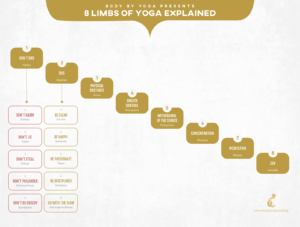
What Are The Eight Limbs Of Yoga
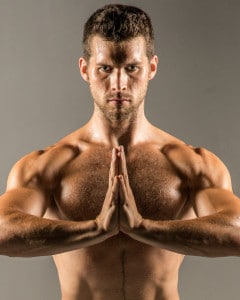
The Yoga Boost Success Guide
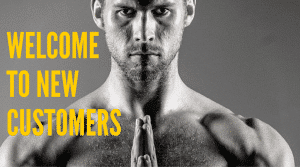
Welcome Message To Body By Yoga Customers
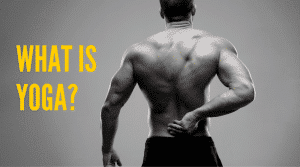
What the heck is Yoga?
Related Articles
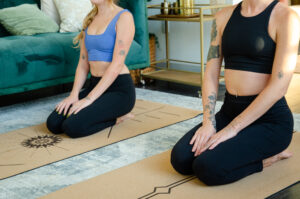
Breathing technique to improve your yoga practice
Your yoga practice can be whatever you need it to be. Yoga can be for energy and focus for your day, injury rehabilitation and prevention,

Other ways to stay involved
One of our favorite things about yoga is the community that’s behind it. We have tons of ways to be involved in our yoga community

Dynamic vs Static Stretching
Stretching is necessary in order to loosen joints, engage muscle groups, prevent injuries and help your body relax, but did you know there’s more than
